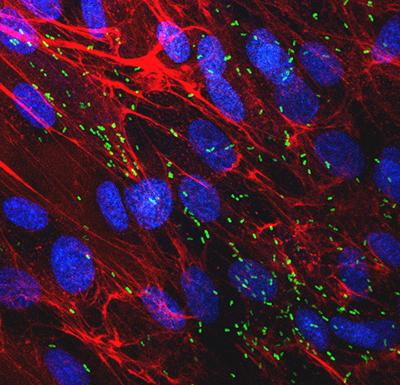NAMRIP researchers discover key roles for bacterial components in triggering inflammation during eye infection

NAMRIP researchers have published their results on the interactions between the pathogen Pseudomonas aeruginosa (PA) and human cornea.
PA is the principal cause of bacterial keratitis worldwide and infection contributes significantly to sight loss. Treating PA infection relies on prompt administration of antibiotics and steroids to reduce inflammation and eye damage. However, inflammation can still continue even after successful antibiotic treatment and eye complications are often associated with steroid use.
The team discovered that the flagellin component of PA stimulates the production of inflammatory molecules from human corneal cells during the early stages of infection. They found that inflammation was increased when flagellin bound to specific human molecules that recognise invading bacteria. Inflammation was reduced with targeted drugs, which can be used potentially in combination with antibiotics as new treatments for bacterial eye infections.
The paper was published in Frontiers in Cellular and Infection Microbiology, with the citation Cendra MdM, Christodoulides M, Hossain P. Signaling mediated by Toll-Like Receptor 5 sensing of Pseudomonas aeruginosa flagellin influences IL-1β and IL-18 production by primary fibroblasts derived from the human cornea. Frontiers in Cellular and Infection Microbiology. 2017;7(130). https://doi.org/10.3389/fcimb.2017.00130
The confocal image above shows a monolayer of human corneal fibroblast cells infected with wild-type Pseudomonas aeruginosa strain PAO1. Cells were live-stained with wheat germ agglutinin (red), cell nuclei counter-stained with DAPI (blue) and the attached bacteria are expressing green fluorescent protein.